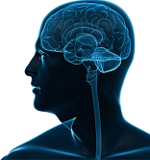March 3, 2014
I travel between two worlds that may appear far apart – by day I am a trial lawyer with a focus on traumatic brain injury; nights and weekends I am a yoga teacher. I increasingly find that these worlds are very close together.
As a brain injury lawyer I work with people struggling to recover from the loss of sense of self so often caused by brain injury as well as associated depression and chronic pain. Many of my clients have reported meaningful increases in the quality of their lives following injury through “mindfulness” practices such as yoga and meditation. Practices such as yoga are designed to increase awareness of the present moment, to increase awareness of our thoughts, emotions and physical sensations without filtering them through past experience or fears of the future – to recapture our sense of ourselves. Read More
February 4, 2014
 On January 23, 2014 the Defense and Veterans Brain Injury Center released new clinical recommendations with a standardized approach for concussion recovery. Included in the recommendations for managing concussion symptoms is a first of its kind five-stage approach for return to activity following a concussion. Detailed “do”s and “do not”s are specified for each stage. Movement from stage to stage is determined by scores on a simple twenty-two item “neurobehavioral symptom inventory” included in the recommendations. Read More
On January 23, 2014 the Defense and Veterans Brain Injury Center released new clinical recommendations with a standardized approach for concussion recovery. Included in the recommendations for managing concussion symptoms is a first of its kind five-stage approach for return to activity following a concussion. Detailed “do”s and “do not”s are specified for each stage. Movement from stage to stage is determined by scores on a simple twenty-two item “neurobehavioral symptom inventory” included in the recommendations. Read More
May 15, 2013
The human brain is complex. Every brain injury is unique. But nearly every person who suffers a brain injury experiences that frightening feeling of “I am not myself anymore.” In mild traumatic brain injury (MTBI) cases, specifically, this feeling may recede over a period of weeks or months. But for others, it does not.
Whether the symptoms are permanent, improve, or get worse, the reasons for these differences are constantly researched—looking for ways to explain, prevent, and/or heal traumatic brain injuries. Several new studies on mild brain injury are examining factors ranging from genetic differences to differences in emotional make-up in order to understand why these differences exist. New research is leading to new approaches in treatment and rehabilitation, as well as prevention.
Read More

